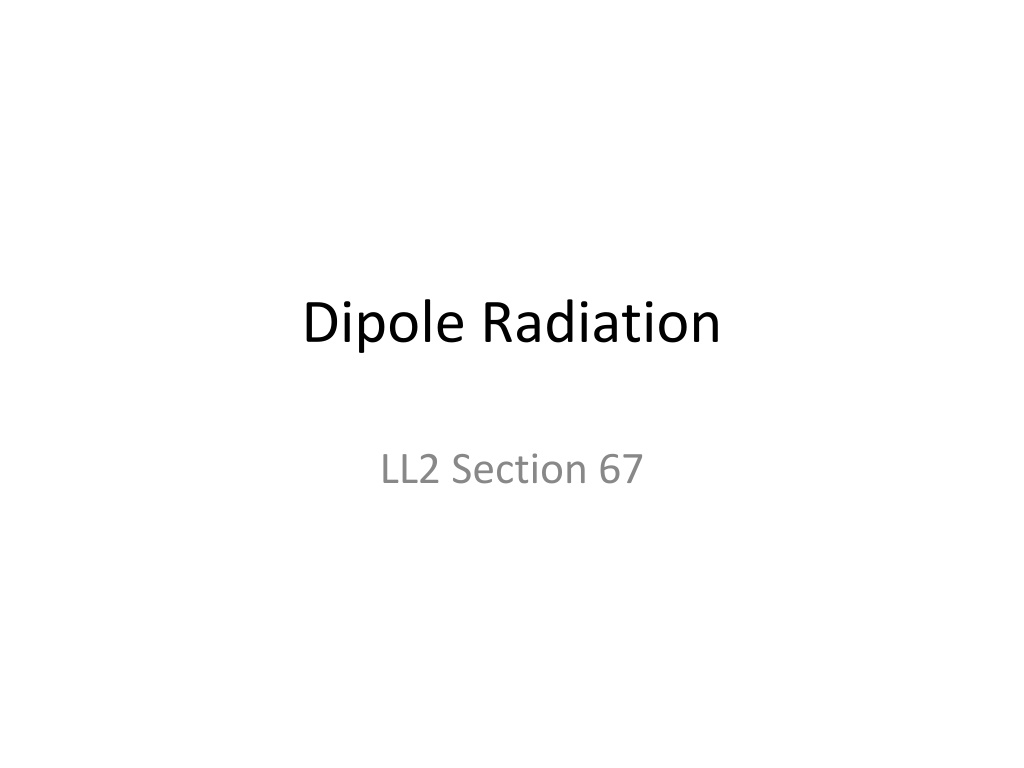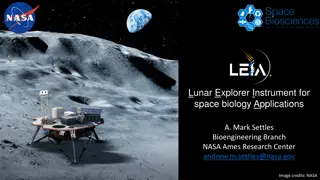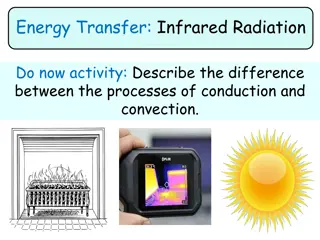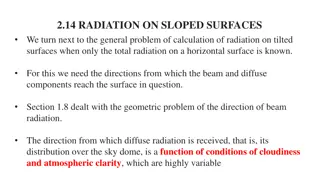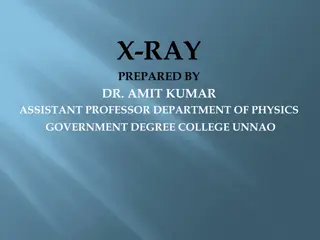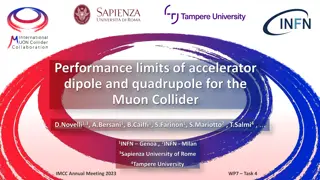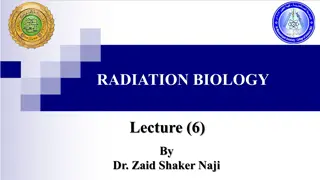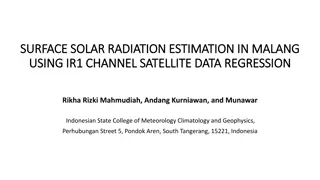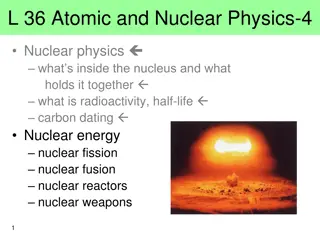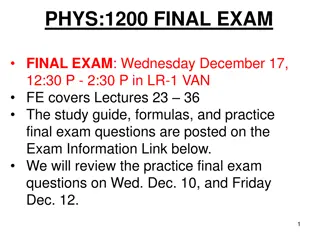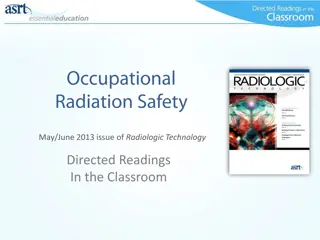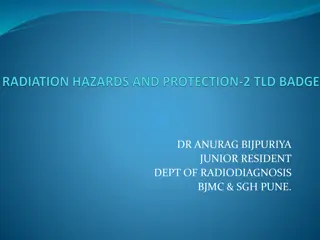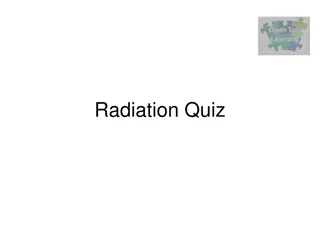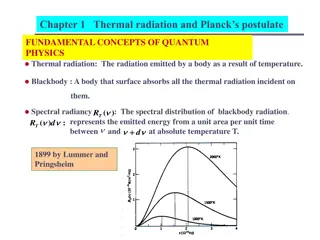Dipole Radiation
Concepts of dipole radiation, retarded potential at large distances, conditions of validity, and radiation properties such as frequency, wavelength, and intensity. Understand the essentials of radiated power, acceleration of charges, and the absence of dipole radiation in a closed system with a uniform charge distribution.
Download Presentation

Please find below an Image/Link to download the presentation.
The content on the website is provided AS IS for your information and personal use only. It may not be sold, licensed, or shared on other websites without obtaining consent from the author.If you encounter any issues during the download, it is possible that the publisher has removed the file from their server.
You are allowed to download the files provided on this website for personal or commercial use, subject to the condition that they are used lawfully. All files are the property of their respective owners.
The content on the website is provided AS IS for your information and personal use only. It may not be sold, licensed, or shared on other websites without obtaining consent from the author.
E N D
Presentation Transcript
Dipole Radiation LL2 Section 67
Retarded potential at large distance If j hardly changes during the time r.n/c, then we can neglect this time. The effect on H ~ dA/dt will be small. This means all parts of the distribution have the same retarded time.
Condition of validity Let T = characteristic time for change in j Radiation will have frequencies ~ 1/T Radiation will have wavelengths ~ c T since = c k Let a = dimensions of the system A time interval The condition means there is no significant change in j during r.n/c For this we need
Alternate form V = characteristic velocity of charges Condition of validity is that the charge distribution is non- relativistic
If we are at large distances And if we assume a small distribution Then we get plane waves ,
Dipole radiation 2nd derivative evaluated a retarded time Fields evaluated at field point R0 and at present time t
Charges radiate only if they are accelerating
Intensity (actually, differential intensity, since units are power) Angular distribution of radiation
For a single charge acceleration Total radiated power (Power)
Closed system with all particles having the same e/m, e.g. an electron cloud. Center of mass position Center of mass of closed system moves at constant velocity No dipole radiation is possible in this case, Even if individual charges are accelerating.
Spectral resolution of the intensity of dipole radiation Total radiation from a non-periodic event, such as a collision
